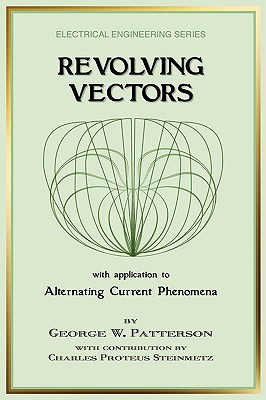
- We will send in 10–14 business days.
- Author: George W Patterson
- Publisher: Wexford College Press
- Year: 2008
- Pages: 100
- ISBN-10: 1934939293
- ISBN-13: 9781934939291
- Format: 15.2 x 22.9 x 0.5 cm, minkšti viršeliai
- Language: English
- SAVE -10% with code: EXTRA
Revolving Vectors with Application to Alternating Current Phenomena (Electrical Engineering) (e-book) (used book) | bookbook.eu
Reviews
Description
The use of complex quantities in the theory of alternating currents was pioneered by Charles Proteus Steinmetz in his work, "Alternating Current Phenomena." Early writers used complex quantities to represent vector quantities algebraically. Steinmetz extended the application so as to include harmonic quantities. As many writers in electrical engineering are prone to confuse vector and harmonic quantities, the author thinks it is necessary to distinguish these two uses of complex quantities, and for that purpose he starts with the vector use and later takes up the harmonic use. In many instances, correct mathematical results may be obtained by treating harmonic quantities as vector quantities, but in other cases (such as multiplication of EMF and current to obtain power) incorrect results are obtained unless arbitrary rules of multiplication and division are introduced - so called "fudge factors." This book clarifies this problem and the interprets the classical theory in a thoughtful and practical manner.
EXTRA 10 % discount with code: EXTRA
The promotion ends in 22d.20:44:15
The discount code is valid when purchasing from 10 €. Discounts do not stack.
- Author: George W Patterson
- Publisher: Wexford College Press
- Year: 2008
- Pages: 100
- ISBN-10: 1934939293
- ISBN-13: 9781934939291
- Format: 15.2 x 22.9 x 0.5 cm, minkšti viršeliai
- Language: English English
The use of complex quantities in the theory of alternating currents was pioneered by Charles Proteus Steinmetz in his work, "Alternating Current Phenomena." Early writers used complex quantities to represent vector quantities algebraically. Steinmetz extended the application so as to include harmonic quantities. As many writers in electrical engineering are prone to confuse vector and harmonic quantities, the author thinks it is necessary to distinguish these two uses of complex quantities, and for that purpose he starts with the vector use and later takes up the harmonic use. In many instances, correct mathematical results may be obtained by treating harmonic quantities as vector quantities, but in other cases (such as multiplication of EMF and current to obtain power) incorrect results are obtained unless arbitrary rules of multiplication and division are introduced - so called "fudge factors." This book clarifies this problem and the interprets the classical theory in a thoughtful and practical manner.


Reviews